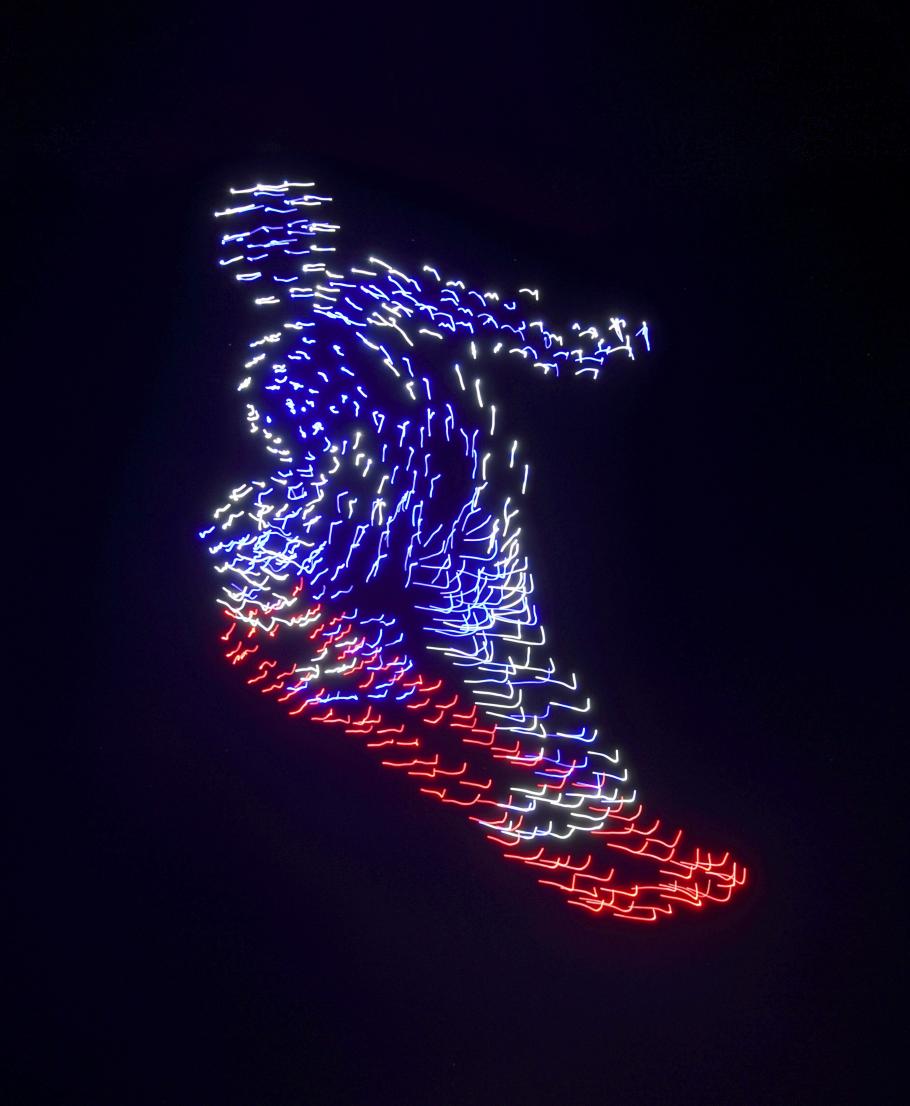Behind the Winter Olympics' Drone Show

Above her head, dots of light coming from 1,218 drones painted the night sky: a blue and red snowboarder morphed into five interlocking rings, ushering in the 2018 Winter Olympics. But Natalie Cheung wasn’t looking up. Instead, she was looking out at the crowd, watching the reaction to the show she helped create.
“When you see it in person live, you can’t put your finger on what it is, because it’s a completely new definition of what entertainment can become,” Cheung said from Pyeongchang, South Korea. “These lights are so precise. It’s a surprise what comes next. You don’t expect it to create an image or a biometric 3D art piece in the sky. Watching it live is something that you really can’t describe. It’s an emotion and an experience that you can’t see on video.”
Cheung is the general manager of Intel's drone light show team, who was responsible for the Winter Olympics' aerial spectacles.
“This was the Olympics! We wanted to go big and break our own records."
Natalie Cheung holding one of Intel Shooting Star drones used during the Winter Olympics Opening Ceremony. Credit: Intel Corporation
For Cheung, the opening ceremony was the successful end of a rush of testing and preparation. The team had just a few months to come up with a design for the show, then manufacture, test, and build the drones, before sending them to South Korea. Their “audacious” original goal was to have 1,000 drones flying in the sky, Cheung said. But just 36 hours before they were set to ship the equipment, the team decided to take a risk.
“This was the Olympics! We wanted to go big and break our own records,” Cheung said. “We decided to fly as many drones as possible for the opening ceremony pre-recording, updating the animation to fit all 1,218 drones. We put all of our eggs in one basket and flew an incredible show.”
Taking risks on a big, international stage isn’t new for Cheung’s team; they also designed shows for the Coachella music festival and Lady Gaga’s halftime performance at Super Bowl LI. Trying something new was also a hallmark of Cheung’s first experience with drones. She bought her first drone on Kickstarter; it was a build-it-yourself model.
“It did fly, and it did crash!” she said. “But the feeling of it flying first and having it lift-off the ground and hover—your stomach kind of tightens a little bit, over the anticipation over whether it’ll work.”
After crashing her new drone, Cheung retrieved it and flew it again. (Cheung notes for any aspiring UAV enthusiasts, that “You will crash your drone. That’s the first way you learn how to fly.”) She spent hours practicing and crashing— her dogs looking on “in horror.” Now, Cheung’s ready to make drones the future of nighttime entertainment.
Drones in motion, animated as a snowboarder, as part of the opening ceremonies for the 2018 Winter Olympics. Credit: Intel Corporation
“I see drone light shows becoming popular around the world—not just for big events like the Olympics or the Super Bowl, [but also] for weddings or proposals,” Cheung said. “There’s the capability for light shows to be everywhere.”
The future of the commercial drone industry is an exciting one, Cheung said, particularly for those just looking to get started. “It’s blossoming as we speak. For commercial drones, there’s so much capability and analysis it can bring.” In the meantime, Cheung will continue her work at the intersection of art and technology, using drones to create groundbreaking entertainment. Who knows where you’ll see one of her masterpieces next.
Related Topics
You may also like
We rely on the generous support of donors, sponsors, members, and other benefactors to share the history and impact of aviation and spaceflight, educate the public, and inspire future generations. With your help, we can continue to preserve and safeguard the world’s most comprehensive collection of artifacts representing the great achievements of flight and space exploration.

